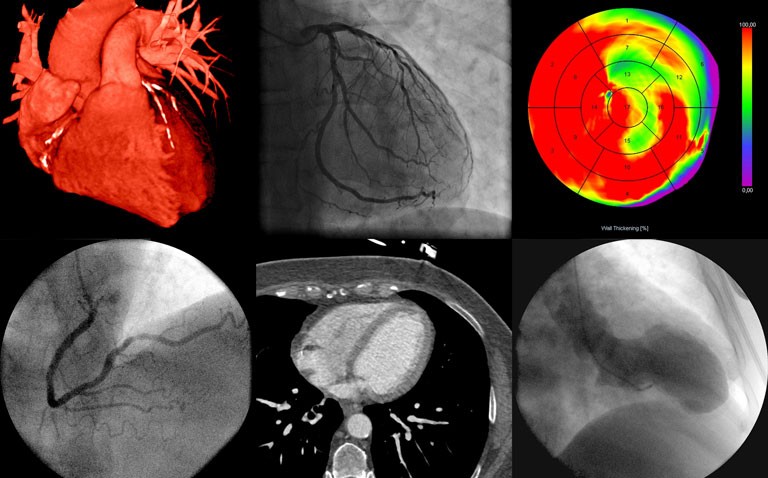In an analysis of suspected cardiac complications in COVID-19, echocardiographic parameters were independently associated with mortality.
Patients hospitalised with COVID-19 experience a wide range of organ system complications including cardiac problems such as arrhythmias and myocarditis. Due to its widespread availability and potential for bedside use, echocardiographic information captured through transthoracic echocardiography (TTE), has become recognised as the preferred first-line imaging modality for patients with either known or suspected cardiac problems. Nevertheless, advice from the European Association of Cardiovascular Imaging (EACVI) is that cardiac imaging should only be performed where appropriate and only if it is likely to substantially change patient management or be lifesaving. Whether echocardiographic data can help with risk stratification in patients hospitalised with COVID-19 has been poorly explored. Thus, a team from the Department of Medicine and Surgery, University of Salerno, Italy, sought to determine whether echocardiographic parameters were associated with in-hospital mortality among those with COVID-19. They undertook a retrospective observational study among consecutive patients admitted to hospital with confirmed COVID-19 infection at seven Italian centres between March and April 2020. All patients underwent TTE within 48 hours of admission and the need for TTE was confirmed as being clinically appropriate by a consultant cardiologist. All patient demographics (age, gender, weight and height) clinical (i.e., co-morbidities, current therapies), laboratory and echocardiographic data were collected and stored electronically. Echocardiographic data included an evaluation of left ventricular end-diastolic (LVEDV) and end-systolic volumes (LVESV). Left ventricular function was assessed by determination of left ventricular ejection fraction (LVEF) and the parameter used to assess global right ventricular function was tricuspid annular plane systolic excursion (TAPSE). The clinical course of patients was also recorded including the proportion who developed acute respiratory distress syndrome (ARDS).
Findings
A total of 1401 patients were hospitalised with COVID-19 and of whom, 226 (16.1%) underwent echocardiographic testing with TTE. Among this smaller cohort, the mean age was 68.9 years (62.4% male) and the majority (61.1%) had hypertension. In addition, 36 and 13 patients had previously undergone percutaneous coronary interventions and coronary artery bypass grafting respectively. Overall, 68 patients within this cohort died in hospital among whom, ARDS was more common (83.3% vs 31%, p <0.001). In those who died in hospital, there was a lower mean LVEF (47.6% vs 55.5%, death vs survivors, p < 0.001) and a lower TAPSE (17.5 vs 21.7, p < 0.001). Using regression analysis and after adjustment for various factors, amongst patients who experienced in-hospital mortality, reduced LVEF was independently associated with in-hospital mortality (relative risk, RR = 0.93, 95% CI 0.89–0.97, p < 0.001), as was reduced TAPSE (RR = 0.80, 95% CI 0.72–0.88) and the development of ARDS (RR = 3.05).
In discussing these findings, the authors highlighted how the risk of mortality was increased among patients with ARDS and the echocardiographic parameters TAPSE < 17 and an LVEF <50%. They suggested that TTE was useful for risk stratification in COVID-19 patients but recognised the limitation of not having TTE data prior to hospitalisation. The authors concluded that while their study has suggested an important relationship between echocardiographic parameters and in-hospital mortality, further studies were necessary to confirm these findings.
Citation
Silverio A et al. Clinical conditions and echocardiographic parameters associated with mortality in COVID-19. Eur J Clin Invest 2021










